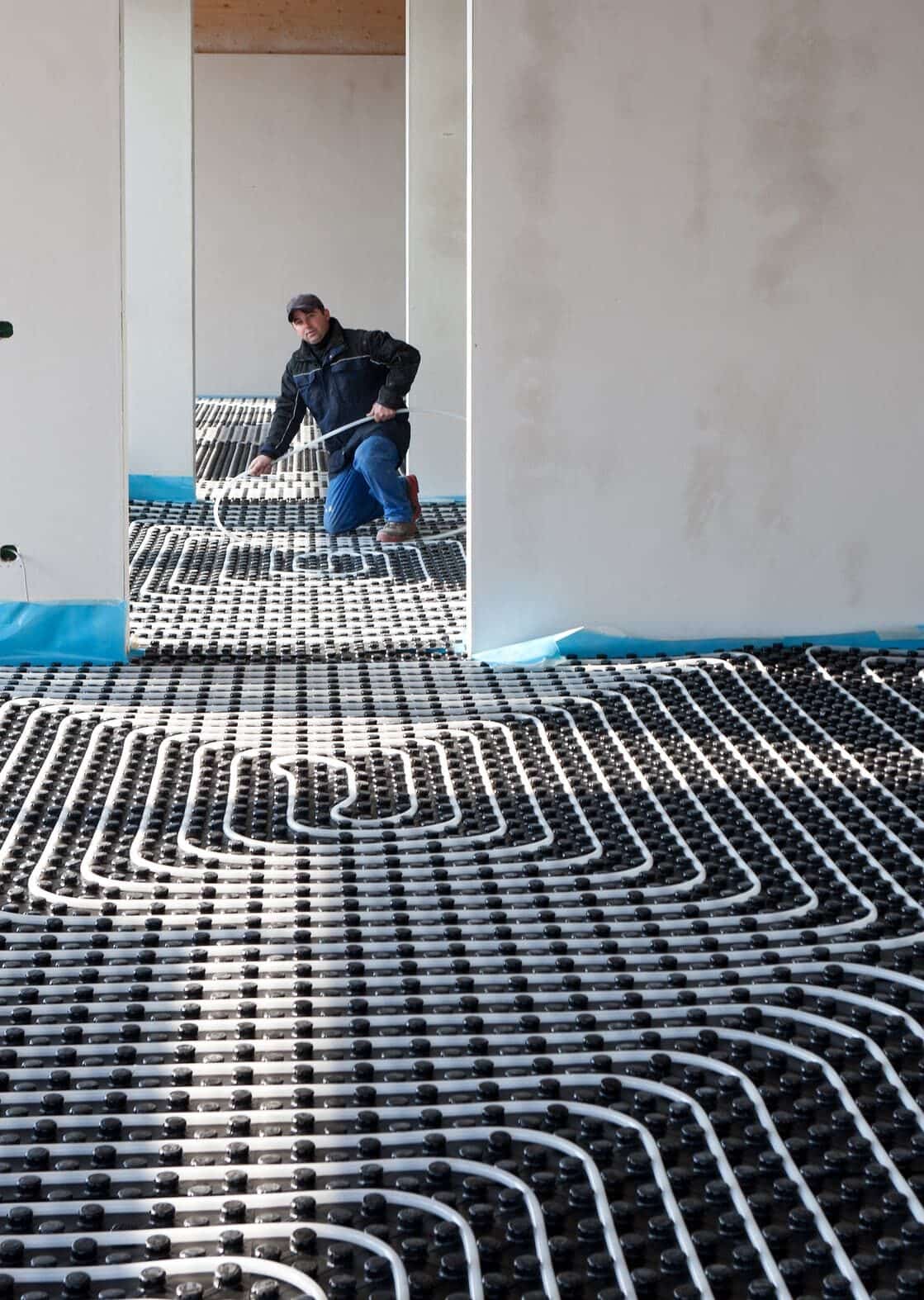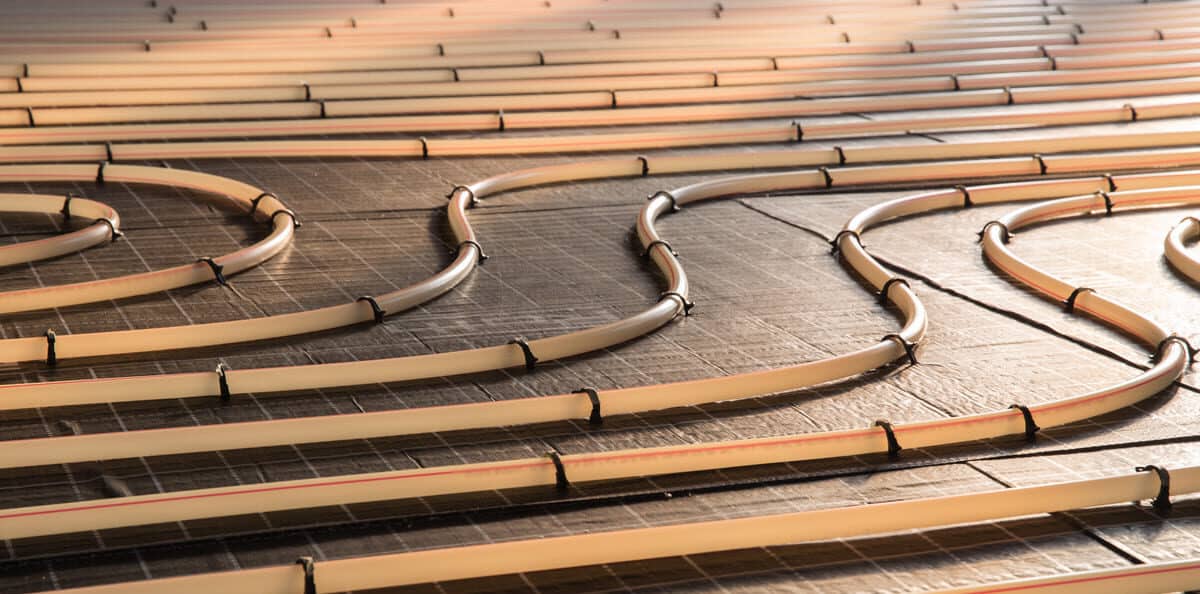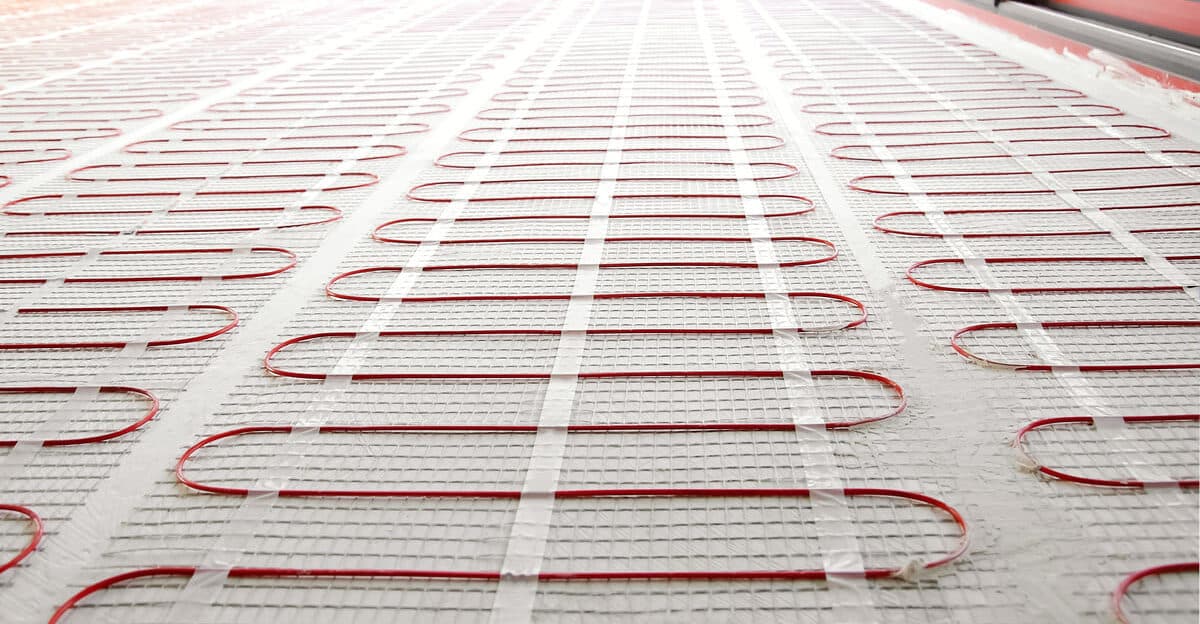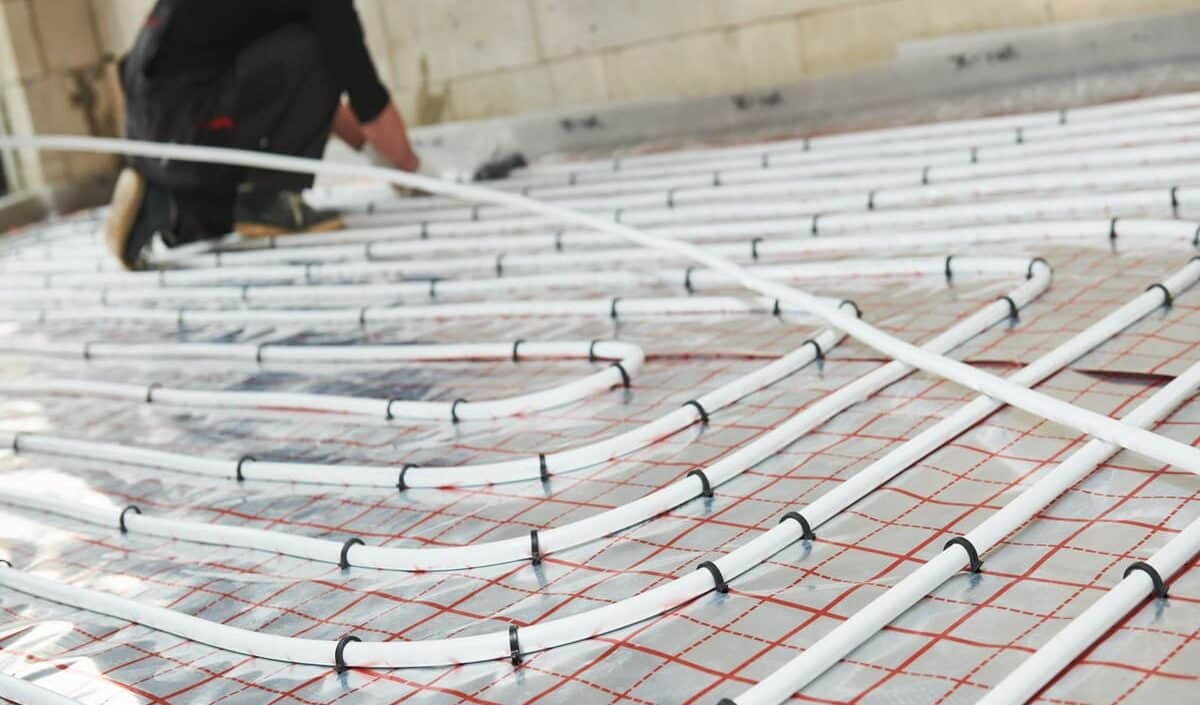

Screed is a type of floor construction that is used in underfloor heating systems. It involves laying a layer of concrete over the insulation boards and UFH pipes, followed by a sand and cement mixture that provides a level surface for your chosen floor covering. This method is suitable for both solid or beam and block floors, as well as suspended timber floors. The screed needs to be carefully laid to ensure that it covers all UFH pipework and insulation boards evenly, so it’s important to hire professional contractors who have experience in installing underfloor heating systems.
Standard between joist floor construction is an ideal option for underfloor heating systems. This type of floor construction has thermal mass, meaning it can retain and slowly release heat over time. It consists of a series of timber joists supporting the structural floor deck with insulation boards installed on top. The UFH pipes are then laid directly onto the insulation board and the screed is then poured over the top, creating a level surface that’s suitable for most types of floor covering.
Dry floor construction is a type of underfloor heating system that does not use water-based heating. It uses an insulation layer and warm air to heat the room, and is usually used in small rooms or on upper floors. The advantages of dry floor construction include faster installation, lower cost and improved efficiency due to the direct heat transfer from the insulation layer. Dry floor constructions can also be adapted to fit almost any space as they don’t require complex pipe work like other types of UFH systems.
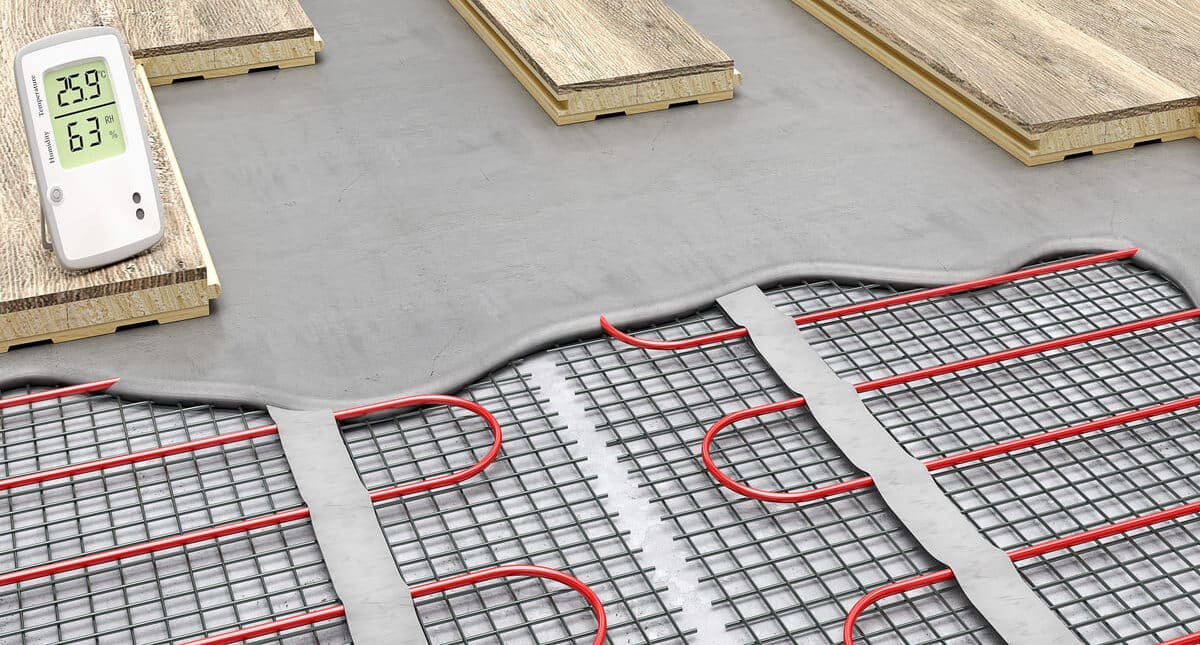
Diffuser plates are a great way to install underfloor heating in floor construction, as they offer an efficient and cost-effective solution. Diffuser plates provide insulation for the chosen floor covering, helping keep your home warmer for longer. By providing greater heat diffusion than other UFH floor construction methods, diffuser plates help to create an even temperature throughout the room. As well as being cost-effective and easy to install, diffuser plates also offer more design flexibility compared to other UFH floor construction methods.
Low-profile floor construction is a popular choice for those wanting to install underfloor heating systems into their home or business. This type of flooring requires only 15mm of space and can be used in suspended floors, making it suitable for most properties. With the use of insulation boards, the UFH pipes are laid on top before a screed or chipboard layer is added, followed by the chosen floor covering. The advantage of low-profile floor construction is that there is no need to raise the existing floor level and minimal disruption during installation.
We Are Also Available to Offer Heat Pumps Related Advice
To find out more about our services, get free quotations, or arrange an appointment, call this number 0204 586 6171.
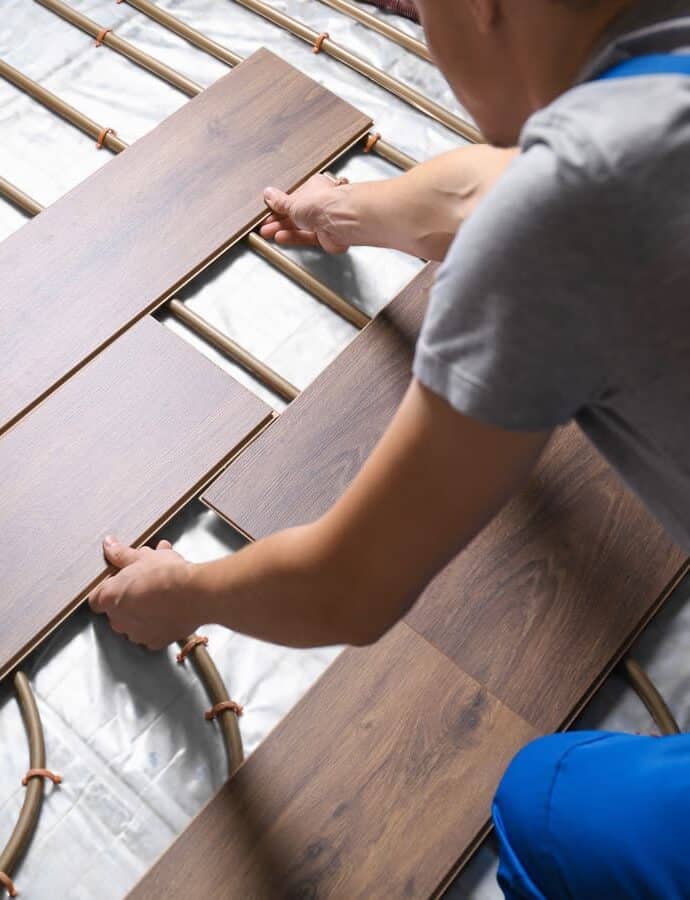
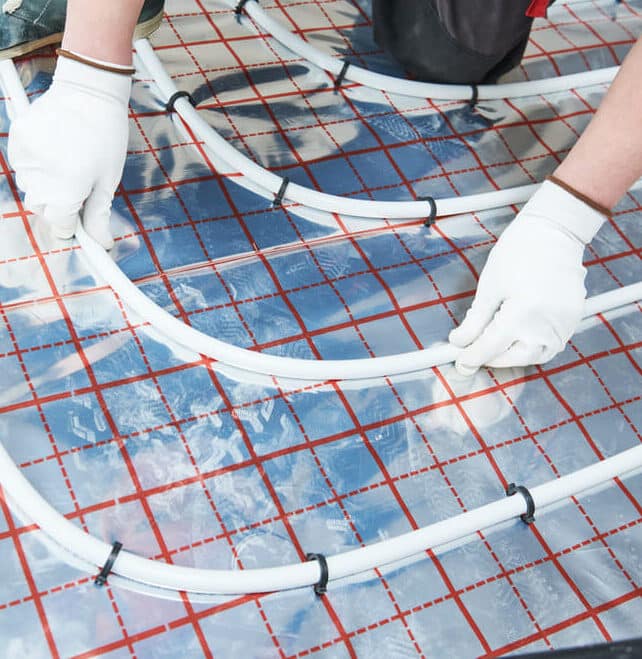
When choosing the right flooring type for your underfloor heating system, it’s important to consider how it will perform. Tile is one of the best options as it can retain heat very well and offers an excellent level of insulation. It also looks great! Concrete floors are another popular option that work well with UFH systems due to their ability to evenly distribute heat throughout a room.
Tiles are the ideal companion for underfloor heating systems. When laid on top of UFH, tiles provide a comfortable, consistent temperature and the right environment for your home.
The combination of these two technologies is perfect for providing an efficient and effective heating system, while also creating an attractive look to any room.
The tiles absorb heat from the pipes underneath them and retain it long after the system has switched off, making sure that you stay warm all day long.
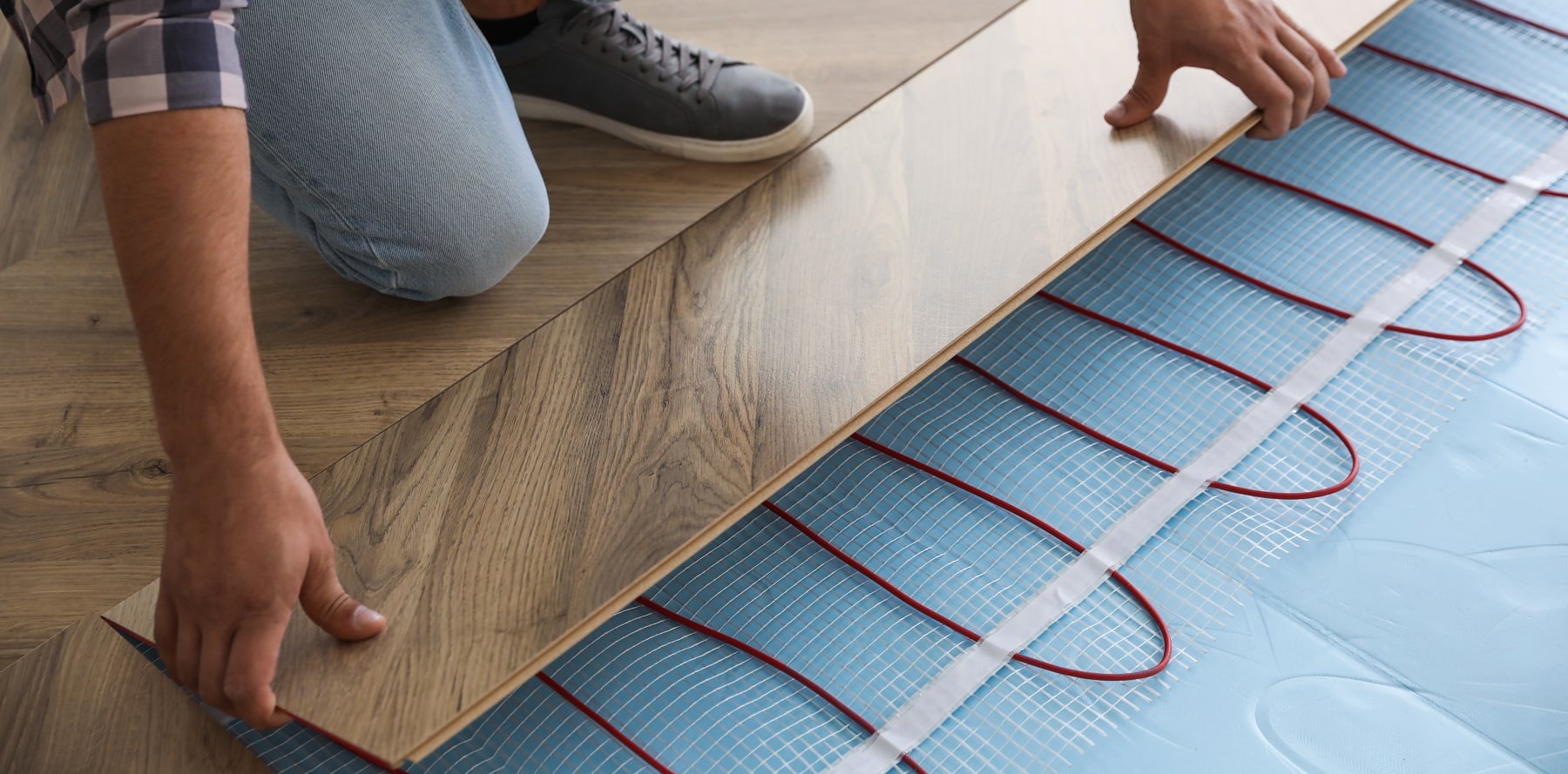
Concrete floors are an ideal choice for underfloor heating, as their high conductivity means they heat up quickly and retain heat well. They can also be laid with a minimum of effort and provide a reliable base for the UFH system to rest upon. Concrete is durable and cost-effective, making it an attractive option for many homeowners. It’s also very easy to maintain and provides a great base for any floor covering.
Installing timber floors with underfloor heating is a popular method, as it can be combined easily with the heating system. Depending on the ratios, the warmth generated from UFH systems will spread evenly throughout your room. This makes timber an ideal choice for those looking to save money on their energy bills and keep their home warm and comfortable during cold winter months.
Laminate flooring is an excellent choice when installing underfloor heating as it has a low thermal resistance and conducts heat efficiently. It’s important to ensure that the correct ratio of UFH output is selected for the whole floor area to ensure an even temperature throughout the room. The different ratios will depend on the type of laminate being used, so it’s important to seek professional advice before beginning your project.
Carpet is a great choice when it comes to underfloor heating as it can offer many advantages. Installing carpets with UFH will help to retain heat in the building, and keep energy bills down. The insulation properties of carpet also make it ideal for installation with underfloor heating, reducing heat loss through floors. Carpet also adds soundproofing benefits which can be useful when living in a noisy area. Installation of carpet with UFH is straightforward and provides an effective and efficient way of keeping a home warm and cosy.





